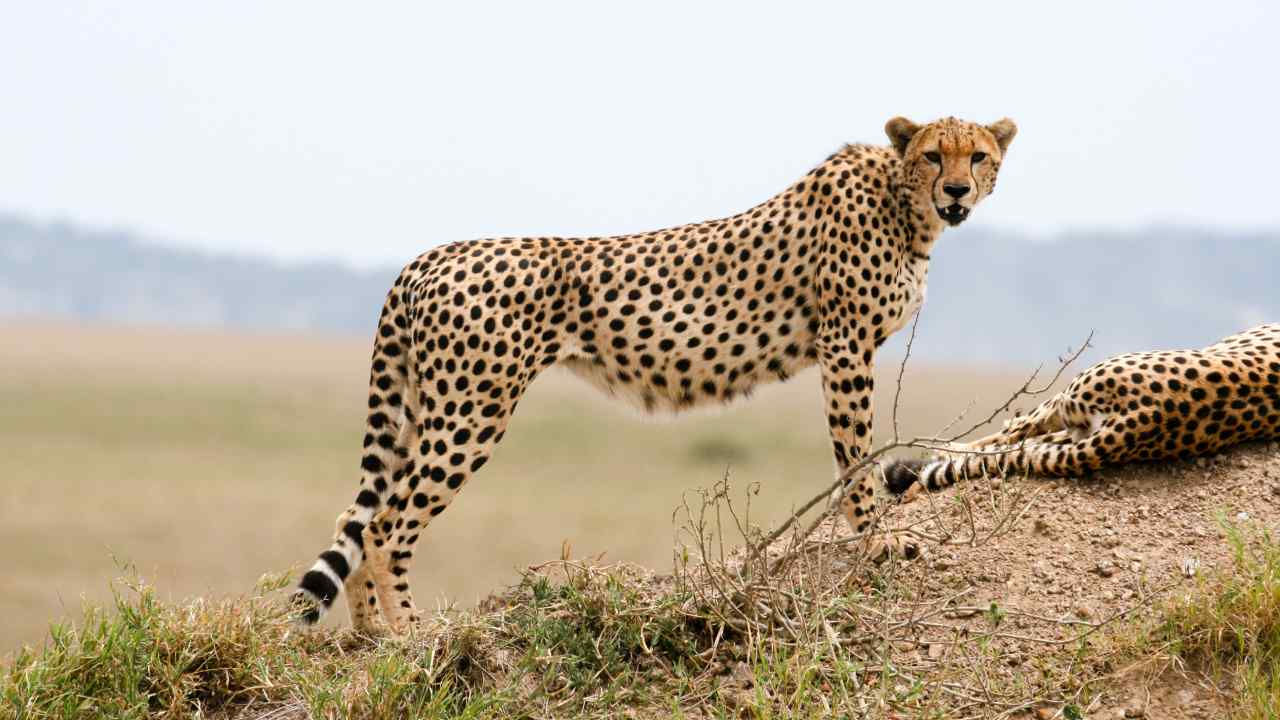A female cheetah called Daksha died at the Kuno National Park on May 9, making it the third big cat to suffer mortality in the past 45 days. Earlier, two Namibian cheetahs, Sasha and Uday died—the female due to renal failure and the male due to brain haemorrhage.
The deaths of three big cats in quick succession has raised questions about the efficacy of the cheetah reintroduction project in India. Wildlife experts have been pointing out to the challenges of undertaking the ambitious plan to introduce the fastest land animal in the Indian wild.
According to a statement issued by the Ministry of Environment, Forest, and Climate Change, the death of Daksha was the result of a violent interaction with the male coalition of Vayu and Agni during the mating process. “Prima facie, the wounds found on the female cheetah Daksha seem to have been caused by a violent interaction with the male, during the courtship/ mating attempt. Such violent behaviours by male coalition cheetahs towards female cheetahs during mating are common. In such a situation, the chances of intervention by the monitoring team are almost non-existent and practically impossible,” said the statement.
On April 30, at a meeting organised under the auspices of the National Tiger Conservation (NTC) project, a decision was taken to release Daksha in the wild. Dr Amit Malik, director NTC, Dr Kamar Koshi of the Wildlife Institute of India, South African expert, Prof Adrian Todrif and Vincent van dan Merwe, manager of the Cheetah Metapopulation Initiative, which is providing guidance to the Indian project, were part of the decision to introduce Daksha in the free-range area of the park for mating with the males. Both males were earlier released in the free-range part of the Kuno National Park.
MP| A female Cheetah Daksha, brought from South Africa has died in Kuno National Park. This is the 3rd death so far: MP Chief Conservator of Forest JS Chauhan pic.twitter.com/dQp5V0f1Ek
— ANI (@ANI) May 9, 2023
The third cheetah death took place just a day after the environment ministry issued a statement saying that five more cheetahs will be taken out of the quarantine and acclimatisation zone for introducing them in the free-range zone before the onset of the monsoon.
On April 2, another Namibian cheetah called, Oban, entered Jhar Baroda village in Vijaypur block, which is about 20km from the Kuno National Park. Videos the feline outside the park limits in the wheat fields went viral on social media.
Sheopur, Madhya Pradesh | Cheetah Oban, one of the cheetahs brought from Namibia, entered Jhar Baroda village of Vijaypur which is 20 kms away from Kuno National Park. Monitoring team has also reached the village. Efforts are underway to bring the cheetah back: DFO
(Video… pic.twitter.com/4iQAoB6tcz
— ANI MP/CG/Rajasthan (@ANI_MP_CG_RJ) April 2, 2023
The next day it once again stretched its legs outside the park and roamed around for four days before the park authorities tranquilised the animal for transporting it back to the reserve zone and prevent any chances of human-animal conflict. On April 18, the same animal was detected roaming even further near the Madhav National Park, which is tiger territory. Earlier, on April 6, another female called Asha was seen lounging under a tree on the park’s border
According to experts, the 748 square kilometre Kuno National Park is not adequate for rehabilitating cheetahs, which are known to roam over hundreds of kilometres. In a letter publish in the Conservation Science and Practice Journal, several wildlife scientists have severely criticised India’s attempt to reintroduce African cheetahs in Kuno, pointing out that the plan did not take the “spatial ecology” of the felines into consideration. “The socio-spatial organization is an important aspect of cheetah behaviour which has not been considered for the translocation so far,” say the authors of the letter.


























